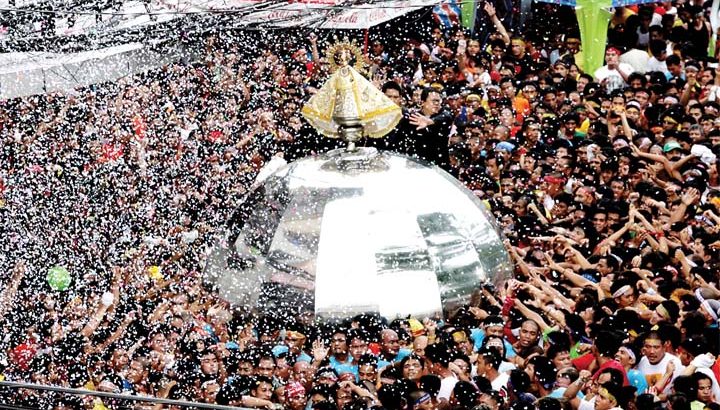Millions of devotees joined this year’s observance in the Philippines of the devotion to the Our Lady of Penafrancia.
The wooden statue of the Virgin Mary, supposedly a copy of the original image in Spain, has been venerated in Naga City, in the Philippines’ Bicol region since the 1700s.
A Spanish priest supposedly ordered a local artisan to carve an image from a picture he carried with him and started the devotion to Mary, called ‘Ina’ or mother, by the locals.
During this year’s celebration, Church leaders are urging Catholics to “imitate Mary’s humble service” and “find greatness in humility” amid the temptations of material possessions and power.
“The fiesta of Ina is not only an occasion that gathers people from all over for merriment but also a moment to deepen our Christian faith and foster our union as a people,” said Fr Louie Occiano of Caceres Archdiocese.
Fr Glen Ruiz, Archdiocesan Liturgical Commission director, said the deep-rooted devotion to the Virgin Mary has been handed from one generation to another for the past 300 years.
“Each generation passes on a whole series of ways of approaching different existential situations to the next generation, which must in turn reformulate it as it confronts its own challenges,” explained the priest.
Gestures
He said the various “gestures of devotion” are manifested through bodily, gestural, and symbolic expressions like kissing and touching images, attending processions and religious journeys, among others.
Every year, devotees pass through an 11-meter high arch dedicated to the Our Lady of Penafrancia to signify their devotion to the Blessed Mother.
Barefoot men called voyadores then carry the image in a religious procession in an annual ritual of piety and religious fervor.
They bring the image of the Virgin Mary from a shrine to a river for a “fluvial procession”, which usually lasts five hours, until it reaches a dock near the city’s cathedral.
The voyadores then race each other to carry the palanquin in the belief that doing so would cleanse them of their sins and heal their illnesses.
No women are allowed to board the virgin’s pagoda or float supposedly because no other woman except Our Lady of Penafrancia is the centre of the celebration.


 Celebrations in Philippines for Our Lady of Penafrancia
Celebrations in Philippines for Our Lady of Penafrancia 